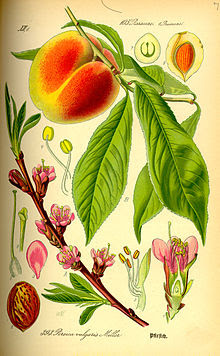Newswise, March 20, 2017 --- Florida
peaches make for a succulent snack, say consumers surveyed by a University of
Florida Institute of Food and Agricultural Sciences researcher.
That’s encouraging news for Florida
producers trying to expand their reach, not only in the Sunshine State but
nationally, said Joy Rumble, a UF/IFAS assistant professor of agricultural
education and communication.
“I was surprised to see that one of
the most common ways people reported eating peaches was as a snack,” Rumble
said. “I thought that people would be consuming them as part of a meal such as
lunch or in a dish such as cobbler or as a topping, like on yogurt. This
finding is encouraging for the Florida peach industry because the Florida peach
tends to be smaller than those produced elsewhere. There is an opportunity to
position and market the Florida peach as the perfect snack.”
Rumble conducted a national survey
of consumers to see if they’re buying peaches and if so, who’s buying them. Her
survey results come as Tori Bradley, a graduate student in the UF/IFAS food and
resource economics department and Sonia Tighe, director of membership for the
Florida Fruit and Vegetable Association, will give a webinar on marketing
Florida peaches at 10:30 a.m. March 23. Register here for the webinar.
Rumble’s survey reveals that most
consumers nationwide don’t know the dates of Florida’s peach season, which runs
from March through May. The survey also showed that consumers really value a
peach with the label “Grown in the USA” on it.
As the first domestically available
peach of the year, the Florida peach has an opportunity to market and promote
the “Grown in the USA” label as well as the “Fresh from Florida” label, Rumble
said.
The survey is part of a specialty
crop block grant focused on increasing the awareness and marketability of
Florida peaches. This grant included a consumer survey and producer/marketer
interviews done to inform a marketing plan to increase awareness and preference
for Florida peaches.
For several decades, farmers have
experimented with growing peaches in Florida, but it was not until recently
that varieties of peaches suitable for Florida’s climate have been developed.
In 2006, producers estimated that there were only 60 acres of peaches growing
in the state. By 2012, the Census of Agriculture recorded 185 Florida
agricultural operations growing 776 harvestable acres of peaches and today,
growers estimate that the total acres of peaches in Florida has grown to
approximately 1,400 acre
.
Despite increased acreage, Florida
peaches have yet to gain significant popularity among Florida consumers, Rumble
said.
Successful expansion of the Florida
peach industry requires increased consumer and retailer awareness of the
industry as well as an understanding of these audiences’ preferences for, and
barriers to, buying Florida peaches, Rumble said.
The peach varieties growing in
Florida tend to be smaller, which has led to a lack of acceptance among
consumers and retailers. However, the Florida peach is tree-ripened and is
“ready to eat” for the consumer and has higher sweetness than other peaches.
“The popularity of peaches from
Georgia and California has overshadowed the entrance of the Florida peach into
the marketplace,” she said. “For the Florida peach industry to remain viable
and growing, it is essential that the product is effectively marketed, and
promoted and that consumer and retailer awareness of the product increases.”
The mission of the University of
Florida Institute of Food and Agricultural Sciences is to develop knowledge
relevant to agricultural, human and natural resources and to make that
knowledge available to sustain and enhance the quality of human life. With more
than a dozen research facilities, 67 county Extension offices, and
award-winning students and faculty in the UF College of Agricultural and Life
Sciences, UF/IFAS works to bring science-based solutions to the state’s
agricultural and natural resources industries, and all Florida residents. Visit
the UF/IFAS web site at ifas.ufl.edu and
follow us on social media at @UF_IFAS.


